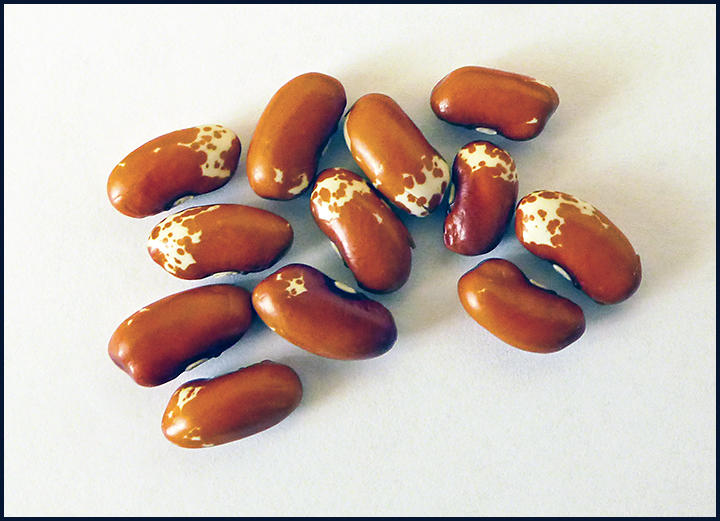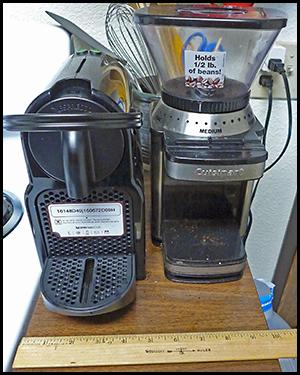-
Posts
4,791 -
Joined
Content Type
Profiles
Forums
Store
Help Articles
Everything posted by Shel_B
-

Using Buttermilk Powder & Heated Milk in Corn Muffin Recipe
Shel_B replied to a topic in Pastry & Baking
Nice to "see" you, too. Hope things are going well for you. -

Using Buttermilk Powder & Heated Milk in Corn Muffin Recipe
Shel_B replied to a topic in Pastry & Baking
Nice to see your smiling pixels, too. Hope you've been well. Your suggestion sounds easy enough. Any particular brand of buttermilk powder that you prefer? -

Using Buttermilk Powder & Heated Milk in Corn Muffin Recipe
Shel_B posted a topic in Pastry & Baking
I have a favorite ATK recipe for corn muffins which involves heating corn meal with milk in the microwave. https://www.americastestkitchen.com/recipes/8205-savory-corn-muffins? If you can't access the ATK recipe for any reason, shoot me a PM and I'll send it to you. I would like to add some buttermilk flavor and tang to these muffins, but I understand that buttermilk cannot be heated as the milk is in this recipe ... buttermilk will break or curdle when heated, Could I add some buttermilk powder to the milk to good effect, or maybe to the corn meal/milk mixture after it's heated? Any other ideas for getting some buttermilk flavor into this recipe? Thanks! -
For quite a while, many consumers have been asking Vitamix to offer a stainless steel container. I've written them requesting they offer one. Well, now they have one: https://www.vitamix.com/us/en_us/shop/48-ounce-stainless-steel-container
-
What's new at TJ's: https://www.bonappetit.com/story/trader-joes-reviews-2019?utm_source=nl&utm_brand=ba&utm_mailing=BA_ROTD_072619_Beggs&utm_campaign=aud-dev&utm_medium=email&bxid=5be5ea102a077c729c2a79d2&cndid=45284821&esrc=bounceX&utm_term=BA_Recipe_Of_The_Day
-

The cost of replacement parts or repair for small appliances
Shel_B replied to a topic in Kitchen Consumer
http://fixitclinic.blogspot.com/ -
Received this list today: The top grocery stores ranked by Market Force Collection: Publix Super Markets: 77% Wegmans: 77% Trader Joe’s Market: 75% H-E-B: 69% ALDI: 68% Harris Teeter: 66% Hy-Vee Food Stores: 65% Costco: 65% WinCo Foods: 62% Whole Foods Market: 61% Fry’s: 58% Kroger: 57% Target: 56% Winn-Dixie Stores: 54% ShopRite: 53% Food Lion: 52% Albertsons: 49% Meijer: 49% Sam’s Club: 49% Ginat Food Stores: 43% Safeway: 39% Stop & Shop: 38% Wal-Mart: 31%
-
The cocoa that I've been using for brownies, pudding, and hot chocolate is, to my dismay, no longer available. This has put me on a quest to find a replacement, and one that looks to be ideal for these needs is Bensdorp, sold by King Arthur, which has a 22% - 24% fat content. Considering the high(er) fat content, would this cocoa powder need to be refrigerated for storage of five or six months? Or would refrigerated storage be a bad idea? If not a good idea, why not? Thanks! ... Shel
-
(Great pics removed to save space) Your pics look great and have made me curious about your recipe and technique. Care to share some more information?
-
Interesting ... been going to Costco for five or six years, never saw anything but Pepsi.
-
Come to think of it, yes, the texture is a bit coarser than the Costco dogs. Never had a Smokie ... think along the line of Kielbasa
-
Once every few weeks or so, I visit Costco, and my treat is often a Polish dog. The last time I visited, the Polish dog was still on the menu. My sympathies, Porthos.
-
Thanks to all for your suggestions. Much appreciate.
-
Sweetie brought me a pound of these beans the other day, and I want to cook 'em up today. It might help to know what they are, maybe even some characteristics. Any help? Thanks!
-
And how many more years will it take before they mention Red Boat 50°N?
-
So here we're discussing peeled garlic cloves stored in oil, but what about garlic cloves, perhaps crushed as well as peeled, or even minced, added to a vinaigrette, perhaps containing salt and pepper. Does that change the equation?
-
This was a surprise ... http://www.reuters.com/article/us-whole-foods-m-a-amazon-idUSKBN1971QJ
-
A couple of things to consider when it comes to getting a satisfactory cup of coffee. The first is the great variety of coffee styles and intensities. Should you not like a particular blend, it's quite possible that one of the more than 25 other blends will be satisfactory. Another factor to consider is that the brew can be customized by programming the machine to deliver a cup size that's more or less than the factory settings to better suit your preference. https://www.youtube.com/embed/Kc0dTJYA6z0?autoplay=0&rel=0
-
I took the plunge. Bought the Inissia a couple of weeks ago - actually, sweetie got it for me for my birthday which is coming up in a few weeks. I used camelcamelcamel to find a good deal on Amazon ($81.00), and when the price dropped to below what I wanted to pay, sweetie purchased the machine. A number of people here and elsewhere complain that the Nespresso coffee is only fair, some say poor. But perhaps they are comparing it to coffee made on very fancy, expensive machines costing hundreds of dollars, or coffee made in various cafés by professional baristas. My most common points of comparison are the coffee I make at home, get at Peet's, or at a couple of local cafés, and the Inissia brew comes close to some of those places, and is better than a few. I'm quite satisfied, and more so considering what we paid for the machine. I suppose a lot has to do with personal preference and what one has become accustomed to over the years. And when the convenience is factored into the equation, it's hard to beat. Allow me to address the capsules and the price. I looked at less expensive alternative brands that produce "compatible" capsules, and thus far, even without tasting them, I prefer the Nespresso. I like the recyclable aluminum capsules and the recycling program. That's important to me. Other brands I've looked at use plastic capsules - yech! And many reviews complain that the "compatible" capsules don't work well, or at all. Also, the variety of coffee Nespresso offers is great ... so many choices. I counted more than 25 choices for the OriginaLine machines, which is the line that the Inissia is part of. At times special blends are offered which look very interesting and worth trying. After trying the machine and tasting some of the samples that came with it, I decided to order a supply of about 70 capsules. The order arrived quickly - I ordered at 10:00am on a Tuesday and it arrived at my door at 2:00pm the following day.. The customer service woman at Nespresso who helped me was great - I ordered by phone rather than on line. She was friendly, accommodating, and very pleasant to deal with. The experience was among the best I've had speaking with a customer service rep. Anyway, here's what I got: Arpeggio, Kazaar, Dharkan, Arpeggio Decaf, Envivo Lungo. When I first logged on to the site to get familiar with what was offered and how things worked, Nespresso was offering a special of $20.00 off. When I logged back on to place the order, I could not find the offer, so I called customer service. The representative told me that the offer had expired a couple of days before, but she gave it to me anyway. Very nice! When the order arrived, an offer for a free sleeve of Indriya was included for my next purchase as well as free shipping with my next order. Also included were discounts for some accessories. And a couple of recycling bags already labeled and ready to go. As noted above, being able to recycle the pods was an important consideration for me. The Nespresso web site seems to be very complete. Apart from being able to order products, there is information, including videos, on how to use, maintain, and troubleshoot the machines. In addition, each coffee is described as to taste and flavor profile, intensity, and the makeup and origins of beans used. Here's an example of a typical description: https://www.nespresso.com/us/en/order/capsules/original/cafecito-de-cuba-limited-edition-coffee Noted on the site was the fact that customer service reps are available 24/7 to take orders, answer questions, and help solve problems. Should there be a problem with the machine that can't be solved over the phone, Nespresso offers their Care Program where they'll service your machine and provide a loaner while your machine is being cared for: https://www.nespresso.com/us/en/machine-assistance Finally, Nespresso has stores and "boutiques" around the country where you can purchase products or recycle used capsules, should you choose that route. There are four stores that are easily accessible to me, although I realize that's probably not the case elsewhere. There are several ways to recycle the capsules, including using a postage paid envelope that can be dropped off at any UPS outlet, which is what I'll probably do. https://www.nespresso.com/us/en/services#services-recycling Space is at a premium in my small kitchen, so the small size of the Inissia (and the Nespresso Pixie) is very welcome. Both my coffee grinder and the Nespresso fit in the space of slightly less than 10 inches. . Overall, I am very pleased with the machine, the coffee, and the completeness of Nespresso's program. All businesses should operate with such thoroughness and professionalism.
-
I go to one of two local BKs about six or so times per year and order the same thing - the cheapest little double cheeseburgers. Rarely do I use the drive thru, so I am able to see how my "burgers" are made. Never have I received a sandwich from a drawer or warming tray. All have been broiled for my specific order. Likewise, to my observation, the other customers that I've seen have also received their burgers fresh from the broiler. Since it's possible to order a burger to your specs, i.e., with your preference of condiments and toppings, I don't quite see how the sandwiches can be kept in a drawer. Even if they were, they'd probably have to be removed, unwrapped, specified toppings added, and then rewrapped. That doesn't seem very efficient. Can you explain how the burgers can be kept in a drawer and still served with specified toppings? Am I missing something? Thanks!
-
Why TJ's is so cheap ... also, some interesting links in the article http://www.sfgate.com/business/article/The-real-reason-Trader-Joe-s-is-so-cheap-11132320.php
-
I'd like to make this chocolate pudding recipe and add some cardamom to it. Should green or black pods be used? Is there an established norm for this and similar situations. Also, should eliminate the vanilla if using the cardamom?
-
Perhaps I missed a comment about this, but after watching more than a dozen episodes of ATK's new season, I am stunned to see many of the recipes are reruns from last tear and years before. That's a real rip off. Has anyone else noticed this? I'm not able to spend much more time on line today, but if anyone's interested, I'll be happy to post some of the reruns with info about when they were first run.
-
Trader Joe's Cold Brew Latte Bars These seem to be a new item. Haven't noticed them at our local TJ's. Has anyone tried them? What do you think? http://designassets.traderjoes.com/Uploads/58606-cold-brew-latte-bars.jpg





